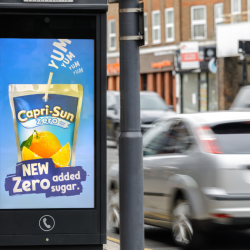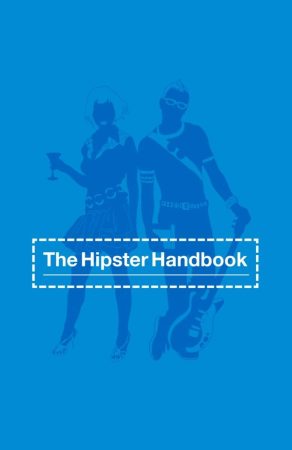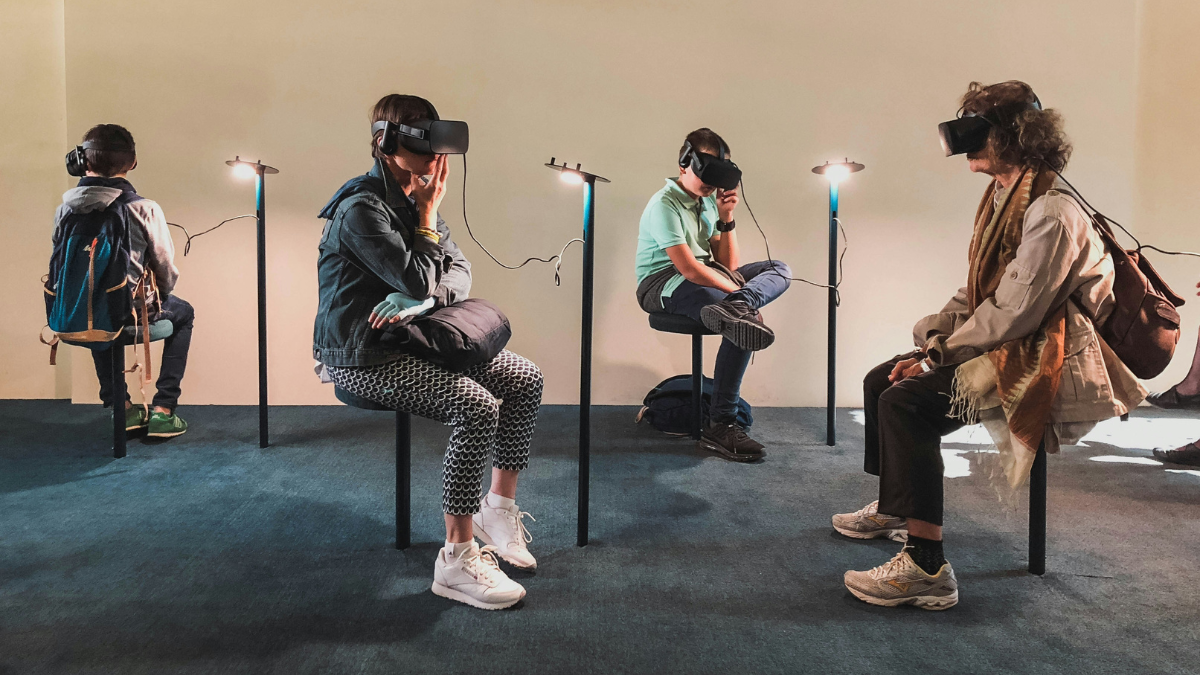When I first moved to NYC in 2008 I encountered an oft-used term that I had previously heard colloquially. I was confused about how frequently it was coming up and asked a panel of cultural tastemakers I was moderating on my first week in town what it was all about. The editors of the key NYC newsletters of the time (Thrillist, Flavorpill, Gothamist) responded, as I now understand appropriately, by denying that they were hipsters.
One of the defining aspects of hipster as a ‘subculture’ is denying the designation (the ‘hipster paradox’), which makes studying the phenomenon sociologically complex, because the people you want to study don’t identify as part of that community, despite the obvious horizontal similarity across their aesthetics and values (including stereotypes of beards, flannel, fancy coffee, vinyl etc).
Regardless, what was culturally erupting then, as Vice attempted to ride the wave into a global media brand, has since gone mainstream
The incredible rise and collapse of Vice media (sold for $350M, previously valued at $5bn) mirrors the evolution of the hipster from a supposed group of increasingly stereotyped countercultural entrepreneurs who consume esoteric media to garner cutting edge cultural capital to what sociologist Alessandro Gerosa calls an ‘aesthetic regime of consumption’, which is gloriously academic (I will try to control myself in what follows). His thesis is that ‘hipsterism’ is an evolution of a long line of counter-cultural movements and then aesthetics that sprang up in light of the ‘alienation’ caused by industrialised mass production, where you only ever make a tiny part of something at work and you buy the same things as everyone else. ‘Hip’ originated in the Afro-American community to reclaim its own cultural status outside the existing mainstream state of oppression, was appropriated by the white middle classes in the ’50s as the Beat hipster, and became the hippies of the ’60s as another wave of counter-cultural feeling burst into being. Then it started swinging back post ’80s greed into the disaffected ’90s and The Hipster Handbook came out in 2003.
This was already being satirised as ‘the rise of the idiots’ by Nathan Barley (TV show, UK) in 2005. Feeling the need to be on the bleeding edge of taste is always easy to mock (Why did the hipster burn their tongue? Because they drank the coffee before it was cool), but what is perhaps more interesting is this round of symbolic appropriation. Capitalism’s most powerful immune defence is making rebellion itself, a product that can be sold. As Danny bemoans in Withnail & I: ‘They’re selling hippie wigs in Woolworths, man. The greatest decade in the history of mankind is over’ and this sense of a prior ‘better time’ can be traced all the way back to the Industrial Revolution and Rousseau. For our analysis, however, we need to explore the defining aspect of modern hipsterism, an even more confused concept: ‘authenticity’. Gerosa points out we should consider what it means in terms of both artisanal production and consumption.
For when capitalism absorbs symbols it has to manage the inherent contradiction that nothing produced for mass markets can be artisanal. Artisanal products cannot scale efficiently, and hence are always prohibitively expensive for the mass market. Gerosa highlights the most absurd example of this tension: the ‘artisanal’ burger range that McDonald’s has since discontinued to focus back on its core. Nothing is more reliably the same everywhere in the world than McDonald’s, the antithesis of artisanal creation. However, there are now different consumer values or needs being expressed through these aspirations.
The hipster boom, observable in certain districts in every metropolis in the world, tends towards food, beer/cocktails and coffee
It is predicated on various aspects of artisanal production called ‘neo-craft’: unique or at least distinctive flavours, some form of skilled labour, and artisanal consumption experience being foregrounded in the environment to be enjoyed slowly (e.g. cocktail bars, independent coffee shops). However, their independence and perceived uniqueness, as opposed to chain versions of the same, are confused by the homogeneity these places exhibit in aesthetics and tone around the world. Fancy hipster coffee shops look the same everywhere. Further, such products move away from the original definition based on art objects, since these products are to some degree industrial, beer production inherently so. However, IPAs allow for a massive range of different flavour profiles, which enables them to play into the distinctive aspect of artisanal production.
Coupled with starting out as small batch, this allows them to grow around authenticity signifiers, pushing against the massification of mainstream brands and their uniform ubiquity with design and positioning. However, to scale, they tend to have to do a distribution deal, or grow large enough to be a suitable acquisition for a conglomerate that has distribution and capital for expansion. And so it goes. Any product in a supermarket labelled artisanal, or natural, or biodynamic, or even ‘organic’ went through some kind of machine. ‘Natural’ on food labelling means pretty much nothing. The most commonly stated reason for consuming organic vegetables is the lack of pesticide exposure, but organic farms can use many ‘naturally derived ones’ from an approved list.
More obviously, vinyl has been a beneficiary of the shift towards artisanal consumption, despite being obviously manufactured
Here the idea of physical not digital objects with more laborious consumption requirements (putting a disc on a turntable) creates a symbolic halo of ‘authenticity’. This seems analogous to how ‘authentic’ musical artists of prior generations dealt with becoming commercially successful. As long as you were playing your instruments and crucially being ‘true to yourself’, you could maintain the belief that you hadn’t ‘sold out’. This individuated version of authenticity is the one we seem to have landed on today, where influencers are valued on how accurately they live (or, more accurately, perform their lives) in accordance with their espoused beliefs or patented diet, lifestyle or financial strategies, with the supposed gains in health and wealth being flaunted as evidence.
This is also why publicly traded corporations cannot be authentic in any ‘genuine’ sense, because the only thing they could say was ‘we want to make more money, more profitably, within the law, unless it only leads to a fine and that’s a business cost’. Ultimately, if one leans into the current interpretation of fiduciary responsibility, a public company must maximise returns, it is the only thing they can ‘authentically’ care about. Corporations have no authentic passion for a sport they sponsor, for example, because if they did it not entirely for maximal profit that is betraying shareholders.
For the largely symbolic consumption of the middle classes, though, being actually authentic doesn’t matter
They don’t tend to have the wealth to buy fine art or artisanal designs from expensive stores, even if the upper middle have a tendency to absorb magazines and culture to find out what rich people like. If one buys couture fashion one is probably not middle class, despite the fact that 90% of Americans believe themselves to be. Arguably there is no real middle class anymore, as the division between upper and lower ever widens. This mass market does however have enough disposable income to trade up from value groceries, and thus many are willing to pay a little more to feel better about themselves as agents of their own health and their impact on the world.
Thus hipsterism has morphed from counterculture to one of the dominant consumer trends of our time.
In terms of production, advertising has been arguably one of the only places that could apply artisanal thinking to mass marketing, making it a natural home for hipsters, since it involves matters of taste and cultural knowledge. You see this in the heavy focus on craft amongst big Creatives of all flavours, for it is through craft that commercial creativity is brought to life, where creative becomes a discipline not just a way of thinking. The industry has been a refuge for those who live in the in-between, desiring an artisanal compromise in their working life, deploying craft and taste for entirely commercial ends.
The advent of generative AI seems likely to industrialise the production of creative assets as ‘good enough’ creative, endlessly optimised, will probably deliver similar incremental gains to the majority of social and digital advertising. Artisanal creative production becomes the reserve of those with broader horizons and larger budgets, a luxury advertising product, in a counter move to the democratisation of advertising that the platforms offered to small businesses.
It is primarily through costly signalling that large brands in mature categories defend mental availability and thus price premiums and share. Equally, we can see harbingers of this possibility with the current rise of indie agencies working with large brands, in contrast to the globally consolidated mega agencies they used to be more comfortable with that have grown more commodified over time.
As analyst Brian Wieser explains ‘Although there may have been points in time in the distant past where it was broadly true that individual agencies offered meaningful differentiation in their processes or product, global agency networks who operate at a massive scale are largely commodified and have been for many years.’ Just of late, we have Mother on Chevy, OKRP on Burger King, Terry&Sandy for Revlon and the new wave of independents in the UK and Australasia: New Commercial Arts, Wonderhood, Neverland, Special, Thinkerbell and more all working on the largest clients.
Global brands may not be able to actually sell truly artisanal products at scale, but now even the biggest brands will be able to choose artisanal advertising.
Featured image: Tim Douglas / Pexels



































